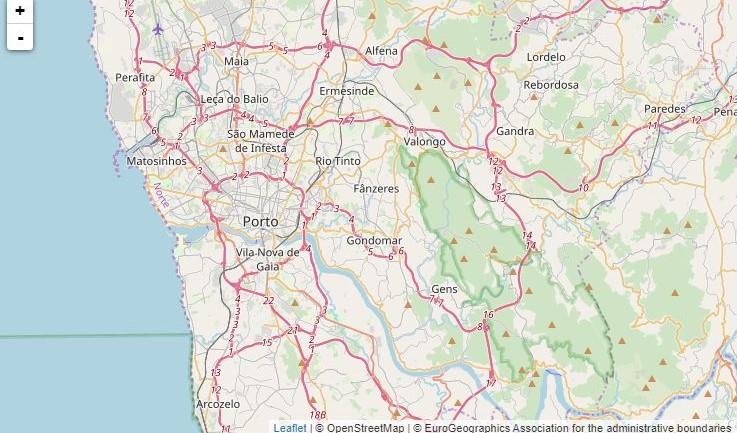Starting from Santo Ovídio station, Porto’s yellow metro line is to be extended by 3.15 km. Three new stations – Manuel Leão, Hospital Santos Silva and Vila d´Este – will be built, as will a depot and workshop, and an additional track for reversing vehicles south of Santo Ovídio.
- 19 August 2020
The extension will run across a viaduct comprising three structures totalling 555 m in length between Santo Ovídio and Manuel Leão, and through a 1 km tunnel containing Manuel Leão station – the only underground station covered by the work – and adjacent sections. It will end 160 m from Hospital Santos Silva.
After Hospital Santos Silva, the track will go below ground again, subsequently re-emerging and continuing overground to Vila d'Este. The section between Manuel Leão and Hospital Santos Silva will have an emergency access and ventilation shaft.
An intermodal connection
As well as allowing the hospital of the same name to be served by the metro, Hospital Santos Silva station will, due to its proximity to major roads, act as a transport interchange and contribute to a reduction in private transport use. The car park at the site will be maintained and renovated to provide a link between the metro station, bus stops and taxi ranks.
Located between Hospital Santos Silva and Vila d´Este, the depot and workshop will improve operation and maintenance of rolling stock. It will include parking for 20 vehicles, a service station, a washing building and a small workshop complemented by warehouses and technical rooms for specialised operations. Access will be via two single-track branch lines.
As a continuation of the existing yellow line, the new track will use a 750 volt, direct current electric traction system with flexible overhead catenary wires. Two traction substations will be built. Signalling, safety, operational support and ticketing systems and equipment will be procured, and the central command and control systems will be adapted to take account of the extension.
Meeting demand and cutting emissions
Made up of 17 municipalities, the Porto Metropolitan Area has a population of 1.7 million and an area of 2 000 km². Its 2016 Sustainable Urban Mobility Action Plan emphasises that transport is the main source of CO2 emissions in the area and that road traffic generates particularly high levels of such emissions in the municipality of Porto.
The Porto Metro is currently 67 km long and has 82 stations and 102 vehicles. It carried 62.6 million passengers in 2018. The 2 493 m segment between Jardim do Morro and Santo Ovídio, where the yellow line currently ends, accounts for around 4 % of the network, but 8 % of demand for its services.
The area to be served by the new stations encompasses several sites of metropolitan and regional importance. These include Vila Nova de Gaia Hospital, where each year some 25 000 people are hospitalised, 10 000 operations are performed, 500 000 appointments are scheduled and 180 000 emergency patients are treated. Vila d´Este, a densely populated residential area, is home to approximately 8 000 people; and Soares dos Reis primary school, which has around 1 000 pupils.
Objectives of the project are to increase demand for metro transport, reduce emissions of pollutant gases and thus tackle climate change, and promote local economic development and social and territorial cohesion. It is estimated that more than 20 million passengers per kilometre will travel on the extension in its first full year of operation and that, in the same period, the extension will cut CO2 emissions by over 2 290 tonnes.
Total investment and EU funding
Total investment for the project “Porto Metro Extension: Yellow Line (Santo Ovídio - Vila d´Este)” is EUR 169 036 397, with the EU’s Cohesion Fund contributing EUR 43 359 619 through the “Sustainability and Resource Use Efficiency” Operational Programme for the 2014-2020 programming period. The investment falls under the priority “Supporting the transition to an economy with low carbon emissions in all sectors”.

